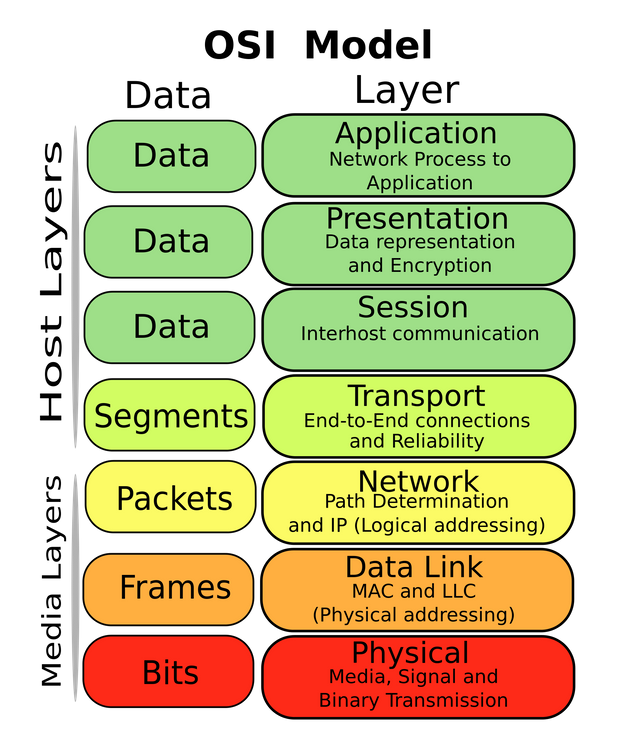osi layer
The OSI (Open Systems Interconnection) model is a conceptual framework used to understand and implement network protocols in seven layers. Each layer has a specific function in the process of data communication across a network. Here's an overview of the seven layers:
1. Physical Layer
- Function: Deals with the physical connection between devices. It handles the transmission of raw data bits over a physical medium (cables, radio waves, etc.).
- Examples: Ethernet cables, fiber optics, hubs, and repeaters.
2. Data Link Layer
- Function: Responsible for node-to-node data transfer, error detection, and correction. It ensures that data frames are sent and received correctly.
- Examples: MAC addresses, switches, bridges, and Ethernet.
3. Network Layer
- Function: Manages the routing of data packets between devices across different networks. It determines the best path for data to travel from source to destination.
- Examples: IP addresses, routers, and packet forwarding.
4. Transport Layer
- Function: Provides reliable data transfer between end systems. It manages flow control, error checking, and data retransmission.
- Examples: TCP (Transmission Control Protocol), UDP (User Datagram Protocol).
5. Session Layer
- Function: Manages sessions or connections between applications. It handles the establishment, maintenance, and termination of communication sessions.
- Examples: Session establishment protocols, Remote Procedure Call (RPC).
6. Presentation Layer
- Function: Translates data between the application layer and the lower layers. It deals with data encryption, compression, and translation (e.g., converting data formats).
- Examples: Encryption (SSL/TLS), data encoding, JPEG, and MPEG.
7. Application Layer
- Function: Provides network services directly to end-user applications. This layer is where user interaction occurs, such as sending an email or browsing the web.
- Examples: HTTP (Hypertext Transfer Protocol), FTP (File Transfer Protocol), SMTP (Simple Mail Transfer Protocol).
Each layer of the OSI model serves a specific function and interacts with the layers directly above and below it, ensuring that data is transmitted efficiently and accurately across a network.

Congratulations, your post has been upvoted by @upex with a 0.36% upvote. We invite you to continue producing quality content and join our Discord community here. Visit https://botsteem.com to utilize usefull and productive automations #bottosteem #upex